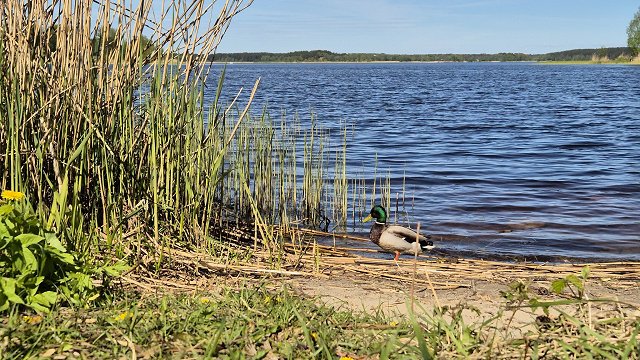The target set for Latvia for the share of energy produced from RES in the gross final energy consumption in 2020 is 40 %. In 2019, Latvia had the third highest share of RES (40.97 %) in energy consumption in the European Union (EU) after Sweden (56.4 %) and Finland (43.1 %). The average in the EU was 19.7 %.
In 2020, each EU Member State had to ensure that energy produced from RES (biofuels, biogas, electricity produced from RES and consumed in transport) accounted for at least 10 % of final energy consumption in transport (5.1 % in Latvia in 2019). In turn, the share of RES for heating in 2019 was 57.8 %, which is the second highest indicator for heating after Sweden (66.1 %) among all EU Member States. In the EU renewable energy accounted for 22.1% of total energy used for heating and cooling.
In 2020, gross consumption of renewable energy sources (RES) in Latvia amounted to 74.2 petajoules (PJ).
Compared to the previous year, RES consumption in 2020 was 1.3 % or by 1 PJ lower, which can be attributed to the decrease in gross energy consumption.
The share of fuelwood in the total RES consumption in 2020 was 78.8 % (in 2019 – 82.2 %). The share of electricity consumption was 13.5 %. The share of biogas in total consumption in 2020 was unchanged (4.6%). The share of biofuel and other energy consumption was 2.8% and 0.3%, respectively.
Gross consumption of fuelwood over five years (2016 - 2020) increased by 7.8% (by 4.2 PJ) and reached 58.5 PJ in 2020 but compared to 2019 decreased by 5.5 % (by 3.4 PJ). Last year, 40.4 PJ of pelleted wood were exported, which is 3.3 % or 1.3 PJ more than in 2019. Exports of pelleted wood have increased by 38 % over the last five years, driven by the availability of raw materials and the global trend to increase the consumption of renewable energy sources.
Electricity produced in hydro power plants has increased by 495 GWh
In 2020, 5 725 GWh of electricity was generated in Latvia, of which 3 650 GWh was RES, and compared to 2019, the volume generated from RES increased by 14.3 % (by 457 GWh). Last year, the primary electricity production in hydro power plants increased significantly - 2 603 GWh, which is by 23.5 % or 495 GWh more than in 2019. In 2020, wind power plants produced 177 GWh, which is 14.9 % or 23 GWh more electricity, and solar power plants - 5 GWh electricity, which is 66.7 % (2 GWh) more than a year earlier.
Last year, CHP plants produced 2 940 GWh of electricity, of which 29.4 % from RES (biogas and biomass CHP plants), which was 7.2 percentage points more than in 2019. Compared to the previous year, in 2020 the electricity produced in biomass power plants and CHP plants decreased from 575 GWh to 520 GWh (by 9.6 %) and in biogas CHP plants from 353 GWh to 345 GWh (by 2.3 %).





























